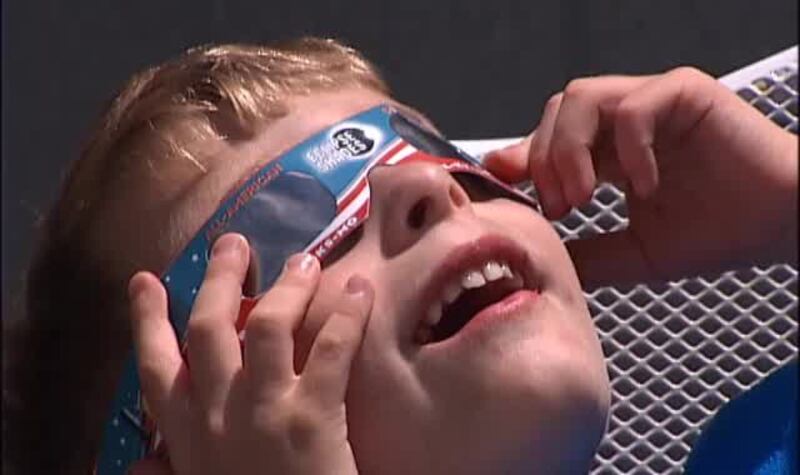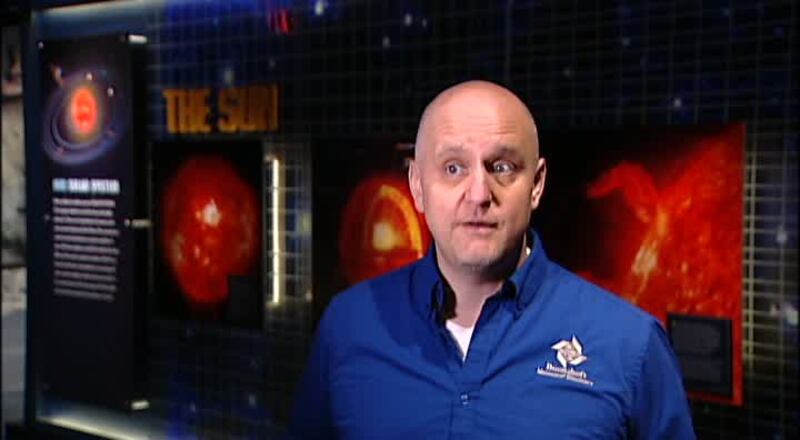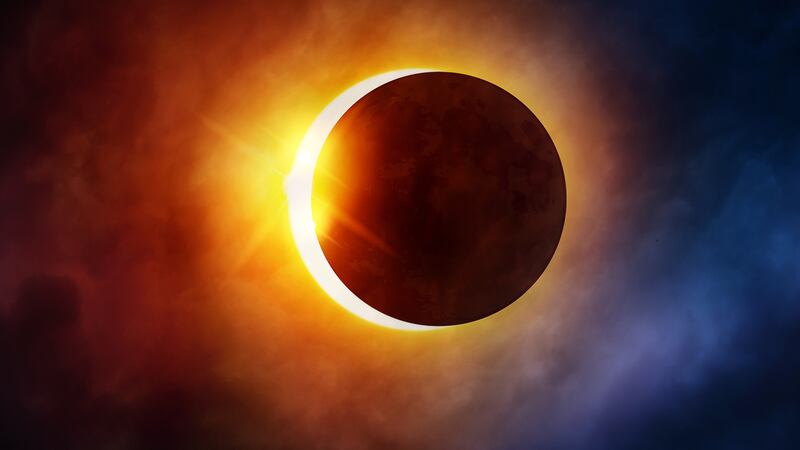America is gearing up for a spectacular celestial event, a total solar eclipse, on Aug. 21, 2017. A total solar eclipse occurs somewhere in the world about every 18 months, but for the moon and the sun to align perfectly to create a total solar eclipse in the United States is rare. The last total solar eclipse that was visible in the contiguous United States was back on Feb. 26, 1979.
QUIZ: How much do you know about solar eclipses?
Jason Heaton, The Director of Astronomy at the Boonshoft Museum of Discovery in Dayton, says this eclipse is being termed the Great American Eclipse.
"It's visible in America, all the way from the west coast to the east coast," said Heaton.
In the Miami Valley, the eclipse will begin shortly after one o'clock in the afternoon on Aug. 21. It will take the moon almost three hours to cross the face of the sun, from one side to the other.
WATCH: When will the solar eclipse be visible in your community?
During the eclipse it will get darker, cooler and shadows on the ground will look strange and animals may act very strangely too.
Many cities across America will see a total eclipse, but our area will only have a partial eclipse. Almost 90 percent of the sun will be eclipsed by the moon. The last total solar eclipse that passed over the Miami Valley was more than a thousand years ago.
THINGS TO KNOW: 7 things about the rare total solar eclipse in August
Unlike a lunar eclipse, the solar eclipse cannot be watched with the naked eye. It must be viewed safely with special filters or eclipse glasses. Even a sliver of the sun, is too bright for our eyes. Looking at the sun for long periods of time can damage your eyes. Even during an eclipse when only part of the sun is visible, it can be harmful to watch. In fact, Optometrist Dr. James Bierly says it may be even more dangerous to look at the sun during an eclipse.
"A lot of time during solar eclipses because of what we call the light spectrum going away, the pupil will dilate on its own, and then you are getting more UV radiation or UV light that is coming in and could cause damage," Dr. Bierly said.
RELATED: Where are the best places in the country to see the Great American Eclipse?
Many people from the Miami Valley said they are traveling to other cities to experience the total solar eclipse. If you can't go and are upset that we don't go to total darkness here, don't worry because we will get our chance in April 2024.
Eclipse 2017 facts:
- A solar eclipse is when the moon moves in front of the sun.
- The solar eclipse happens on Monday, Aug. 21. It will start in the northwest United States, and end in the southeast United States.
- This hasn't happened to this scale since 1918.
- The next total solar eclipse that we will be able to see in southwest Ohio is in 2024.
- Solar eclipses happen fairly often, but they are not total, meaning some parts of the sun are still visible.
- Partial eclipse starts near Seattle, Wash. at 12:08 p.m.
- Partial eclipse starts for Dayton at 1:02 p.m.
- Max eclipse for Dayton at 2:28 p.m.
- Partial eclipse ends for Dayton at 3:51 p.m.
- Partial eclipse ends near Charlotte, N.C. at 4:04 p.m.
- We will not be in the path of totality (where the moon completely covers the sun), so it is not safe to look directly at it here in SW Ohio.
- If you are in the path of totality, you can look directly at it during the Max time.








